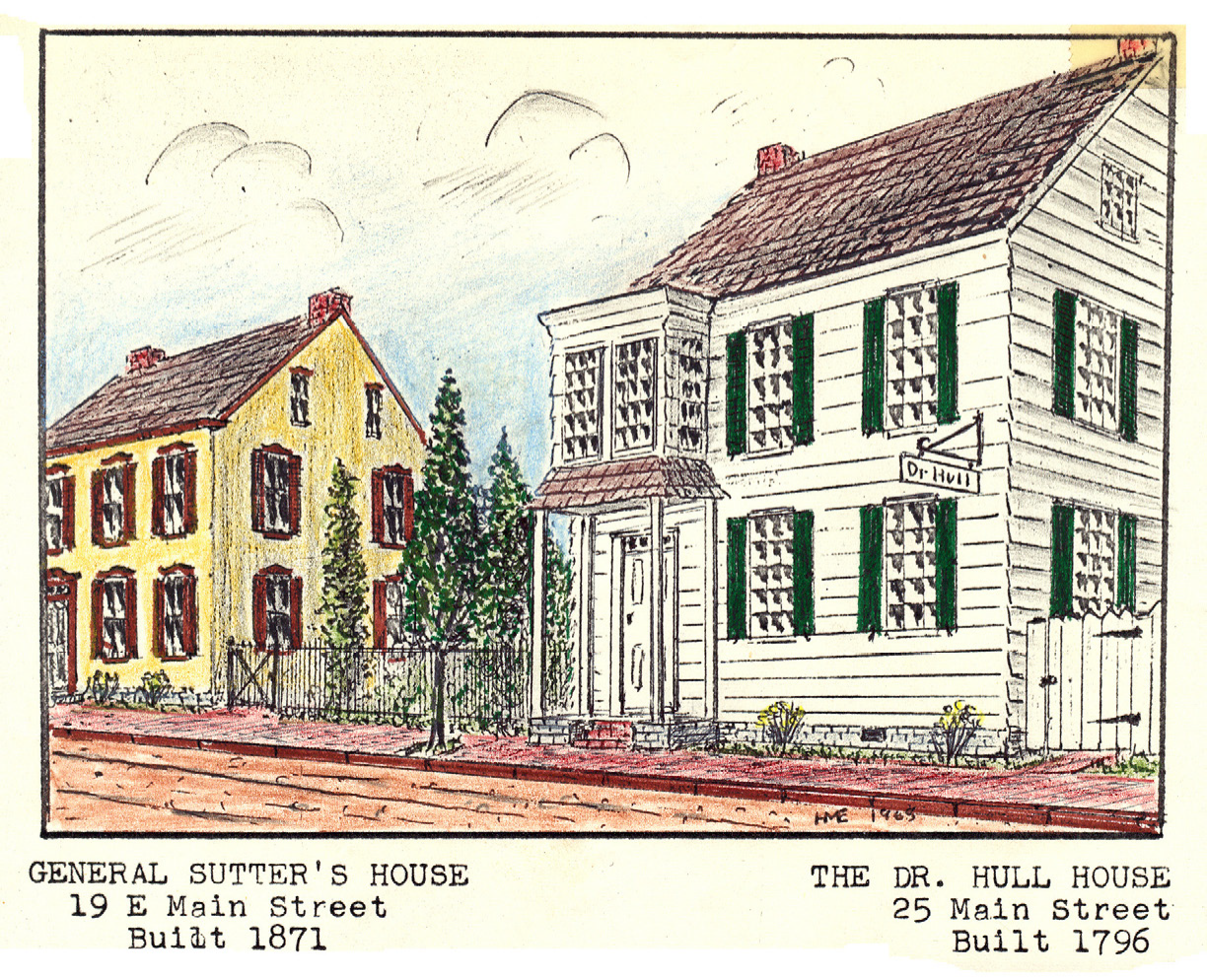
The Dr. Levi Hull House (written 4/17/1969)
One of the last homes to be built in old Lititz but far from lacking in historical lore was the Dr. Levi Hull House now Armold’s (jewelry store in 1969). Despite the face lifting the front of the house has received, it has seen very little change on the inside. The original stairways, doors, windows and a second floor fireplace are still there. The old locks and hinges still function per- fectly and there is a room in the attic showing the hand hewn lath back of the plaster as well as the original cedar shingles under the present roof. Part of the basement is also plastered in the same way and boasts a huge fireplace.
Cellar fireplaces were usually built for butchering purposes as well as soap making, but it is claimed this one was used many years for making snuff.
The house is of two story log construction – the only one of its kind in Lititz and was built by Matthew Blickensderfer in 1796. What Matthew did is unknown but he made sure he would know all that went on in his end of town when he added the second floor bay window. He got the idea from his father who built the house across from the post office and had a similar bay win- dow. Between the two families they probably missed very little that happened in the village.
In 1843 Dr. Levi Hull, a practicing physician, opened up the community drug store in this building and lived on the second floor. He was married to Catharine Kauffman and they had twelve children but by the time he was thirty-nine he had lost seven of them, proof that even the doctors could not cope with the epidemics prevalent at that time.
Harry Hull was one of the children that survived and he was twenty when General Sutter’s fam- ily arrived and he first saw Sutter’s granddaughter, Anna Elisa, then fifteen. This was in 1871 and he was naturally delighted to see the old Inn stable torn down next door and a modern brick building erected. When Elisa finished her education at Linden Hall she could speak five lan- guages but never mastered Pennsylvania Dutch. She and Harry Hull were married and lived on West Orange Street for a number of years.
Just who was the next occupant of the Hull House has not yet been learned, but it is believed the house was used for Lodge meetings until Rudy’s Hall was built in 1900
A 1913 Directory indicates that the first floor of the house had been converted into a modern jewelry store by Harry R. Wertsch and the second floor is still the residence of Mrs. Wertsch. (1969)
After Dr. Hull quit the drug business a new building was erected next door (now [1969] the Harris Variety Store) and Dr. J.C. Brobst took possession in 1859. He was listed in a 1905 di- rectory as “physician, druggist, proprietor Inland Chemical Co. and the Lititz Sanitarium”. His two children were Helen and Valentine. In 1907 this became Moyer’s Drug Store which old- timers remember best for the big ice cream sodas for a nickel. After he moved to 40 E. Main St. this business was purchased by Clyde Benner in 1941.
Dr. Brobst was not without competition for as early as 1880 Hiram Frey opened a store at 55 Main St., called a drug and department store. After moving to the corner of Cedar and Main he was succeeded by Jacob Charles and then by Curtis Hensel who in turn was followed in 1940 by Glenn McElroy.
Across the street is Dr. Otto’s stone house, the county’s first drug store and we are fortunate in still having the Dr. Hull house that followed this. There is much research that should be done by some qualified medical authority on the many medicines made here years ago. Many were good old Indian remedies but with a liberal shot of alcohol added. Lititz gained national recog- nition when the first pharmacopeia (druggist’s bible) was published here by Dr. William Brown in 1778. He was Physician General of the Continental Army.
